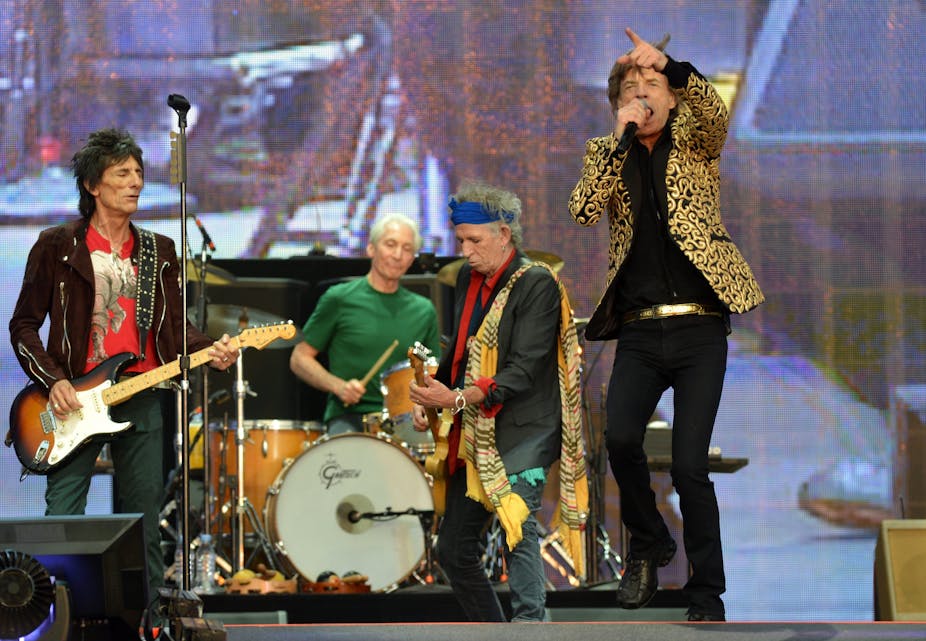Legendary British band The Rolling Stones have started themselves up for their 50th anniversary tour. Predictably, this has encouraged more replays on vinyl – I doubt it’s on iTunes yet - of that old refrain that ageing rockers should just shuffle off the stage.
Rock and pop music have always been a scene for youngsters. Even the most energetic older rockers can only look on in amazement at Pink’s acrobatics in her Truth About Love tour this year. She has sold out 18 shows at Melbourne’s Rod Laver Arena – breaking her own record from her 2009 Funhouse tour of the most shows in one tour.
Another younger star, Justin Timberlake, has the record for the biggest single crowd at Rod Laver Arena of 16,183 in 2007. The latest Australian Bureau of Statistic (ABS) stats on pop music audiences show that just under half the 5.3 million Australians attending pop music each year are aged 15-34.
That means 2.7 million pop music fans are 35 or older. Rod Laver Arena didn’t get to be the third highest grossing venue in the world in 2009 by just hosting the younger fans. Within a few seats of Timberlake’s crowd number are two shows by veterans – heavy metal act Metallica in 2010 and Bruce Springsteen & The E Street Band earlier this year.
There can be plenty of smirks for some older rockers. The two remaining Beatles have been singing about “when I’m 64” with nostalgia for some time now. And Who guitartist Pete Townshend’s “hope I die before I get old” now ranks with the best post-modern irony.
If the longevity of some rockers is impressive, the same goes for their fans. The ABS has been publishing these figures for twenty years now so we can track people since 1990. Overall attendances at popular music have grown strongly over this period.
We can follow particular groups. The older baby boomers, born between 1945 and 1954, were 15 to 25 year olds in 1970. They were the ones who saw the heyday of the first incarnation of the Rolling Stones, for example. This group were aged 35 to 44 for the first ABS survey in 1990, and 700,000 of them went to pop music events. They averaged 50 in 2000, and 650,000 went along. In 2010, 600,000 people celebrated turning 60 by still rocking.
Not fade away, indeed
The next older cohort - born between 1935 and 1944 - were always less into rock ‘n roll. They were 25-34 in 1970 and in a time when the average age of marriage was 22, most were dealing with young kids rather than attending the live music scene.
Nonetheless, a reasonable 400,000 of this group turned out for popular music in 1990. That 400,000 kept their interest over the next ten years, with the same number - and, you suspect, mostly the same people - coming in 2000, when they were 60.
Numbers have dropped a little as they reach their 70s, but 236,000 of 65-74 year olds still attended popular music shows in 2010. Incidentally, that was slightly more than the 215,000 of the same age group who went to classical music in 2010.
The decline in numbers after age 65 might not just be a question of interest.
More than a few blogs have celebrated the Rolling Stones’ 50th anniversary by looking back at the 50 years of the band’s concert ticket prices. There’s been a massive escalation. In the 1970s, you could see the Rolling Stones in various venues across the United States for a mere $10. In the late 1980s the price rose to $30. The tickets are now well into the $100s, and that sort of inflation isn’t included in adjustments to pensions for their diehard fans.

